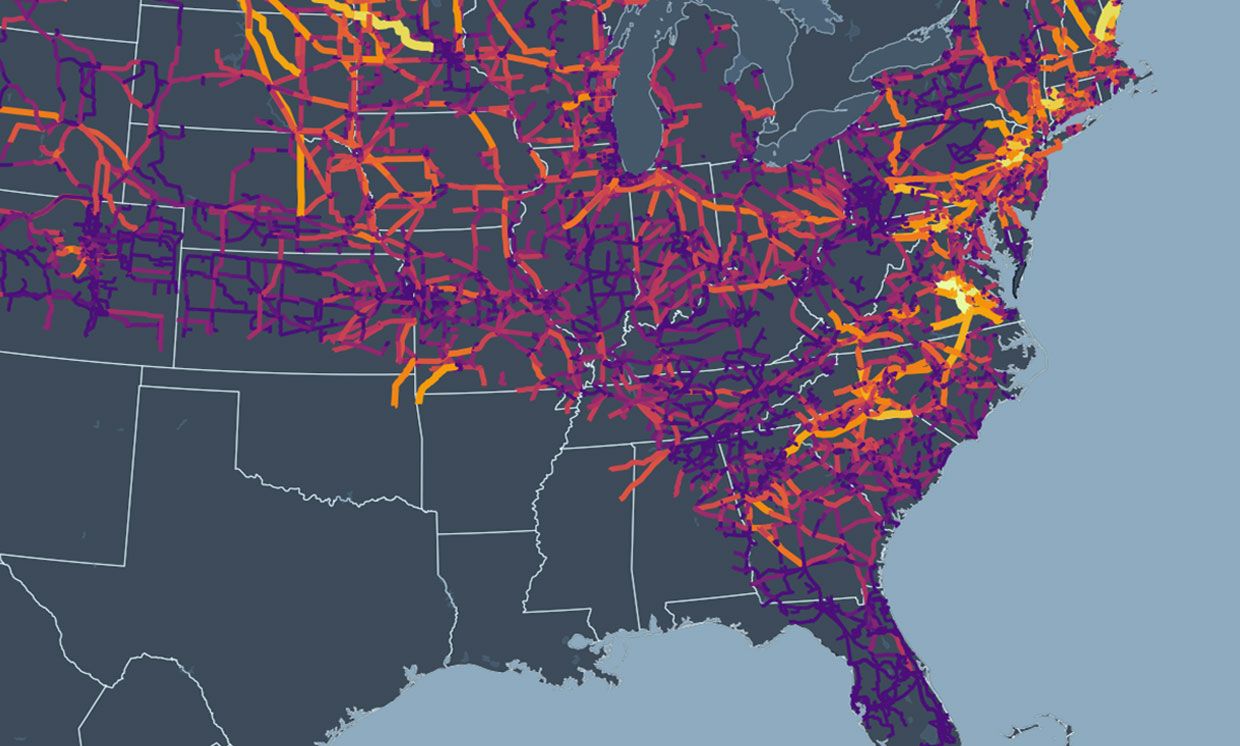A Carrington Event-level disruption could actually kill people through its second order effects.
From IEEE Spectrum:
Grid operators in Minnesota, North Dakota, and Wisconsin should take extra precautions against solar "weather"

This map shows 100-year storm-induced voltages on the national electric power grid.
A new study about solar-induced power outages in the U.S. electric grid finds that a few key regions—a portion of the American midwest and Eastern U.S. seaboard—appear to be more vulnerable than others.
The good news is that a few preventative measures could drastically reduce the damage done when a solar storm hits Earth. Those include stockpiling electrical transformers in national strategic reserves.
Jeffrey Love is a research geophysicist at the U.S. Geological Survey (USGS) in Golden, Colorado and co-author of the new USGS solar geoelectric hazard study. He’s one of many voices in the worldwide geophysical community warning that geoelectric “perfect storms” will happen—it’s not a question of if, but when. Such storms can last between one and three days.
Love explains that solar flares and other solar mass ejections that travel through space can slam into Earth’s atmosphere and generate powerful electric and magnetic fields. These magnetic storms can occasionally be intense enough to interfere with the operation of high-voltage electricity lines.
Depending on the geology of a given region, the currents a geomagnetic storm induces in the power lines can destabilize the power grid’s operation and cause damage to (or even destroy) transformers.
Fortunately some kinds of rock, such as sedimentary formations, are relatively electrically conductive. Which means they’re more effective at dissipating storm-induced electric fields. And so the regions of the country with more of these conducting-type rocks will be more resilient to a magnetic storm. As it happens, that’s most of the United States.
Some regions with bad geological luck, however, happen to have more electrically resistive rock (including igneous and metamorphic formations) in the ground. And that means high-voltage electrical wires in those parts of the country will be more subject to geomagnetic disturbances from solar flares. Utilities in those regions need to know that power disturbances and outages—and possibly blown transformers—are more likely in the case of a big solar storm hitting Earth.
In a worst-case scenario, Love said, portions of the electric grid without enough backup transformers and other equipment could find themselves unable to operate until they can swap in backup systems. Of course, if there are not enough transformers and other devices, many in the hardest-hit regions could be without power for days or weeks until equipment could be delivered or built from scratch.
In March 1989, for instance, a so-called coronal mass ejection from the sun slammed into Earth. Because of how the planet was oriented when it hit, it blew out power grids and transformers primarily in the Canadian province of Quebec. For the next 12 hours, millions of people were thrown back to a world without any electricity, lights, heating, or other necessary services.....MUCH MORE
“The geomagnetic disturbance was global, but the effect was prominent for Quebec because Quebec has old and geologically resistive rock,” Love said. “Also, power grid systems in Quebec have very long lines, meaning that the integration of electric field along the lines (produced) very high voltage.”....